The Latest High-Capacity M.2: The Samsung 860 EVO 2TB SSD, Reviewed
by Billy Tallis on February 14, 2018 1:40 PM ESTAnandTech Storage Bench - Heavy
Our Heavy storage benchmark is proportionally more write-heavy than The Destroyer, but much shorter overall. The total writes in the Heavy test aren't enough to fill the drive, so performance never drops down to steady state. This test is far more representative of a power user's day to day usage, and is heavily influenced by the drive's peak performance. The Heavy workload test details can be found here. This test is run twice, once on a freshly erased drive and once after filling the drive with sequential writes.
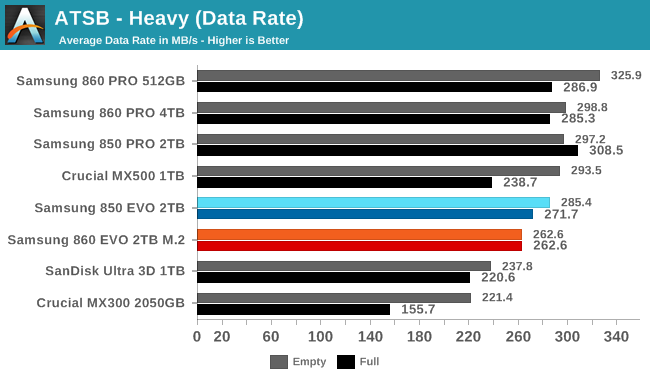
The Samsung 860 EVO's average data rates on the Heavy test are slightly below the 850 EVO, and the full drive and empty drive test runs produced the same average data rate. These regressions still leave the 860 EVO faster than most of its competition, though the Crucial MX500 is clearly faster when the test is run on an empty drive.
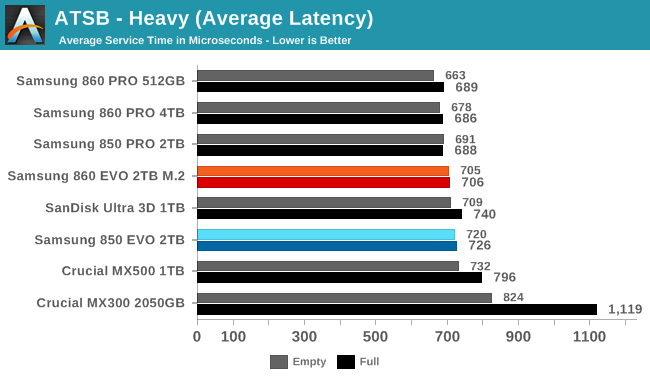

The average and 99th percentile latencies of these SATA drives are mostly quite similar. The Crucial MX300 had clear issues when full and the MX500 has slightly higher latency than its competitors, but otherwise the differences are minimal.
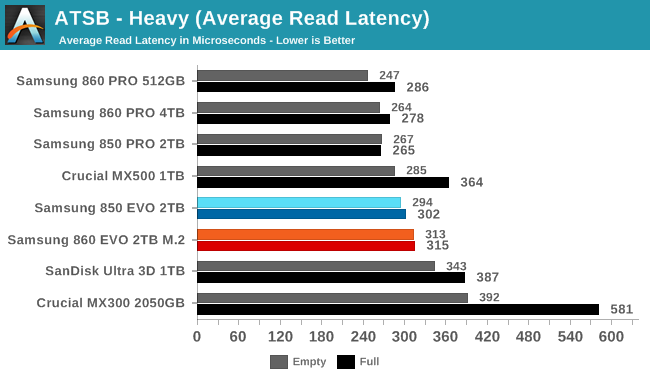
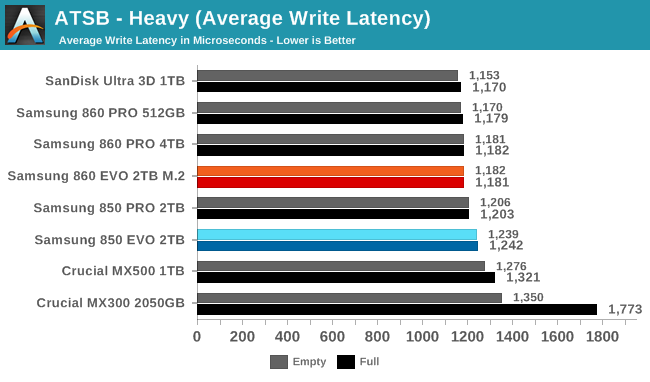
As compared with its predecessor, the Samsung 860 EVO shows slightly higher average read latency and slightly lower average write latency. The 860 EVO's scores are all still within the normal range for this product class.
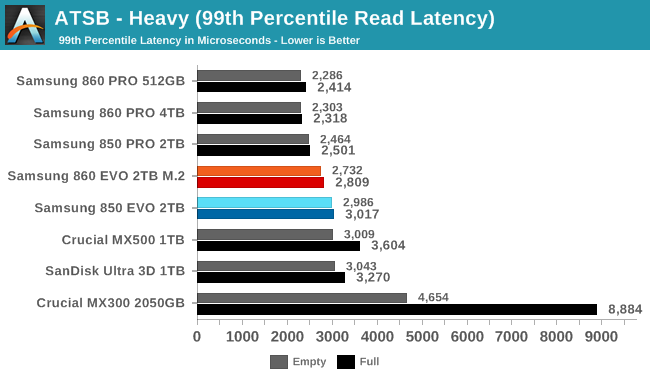
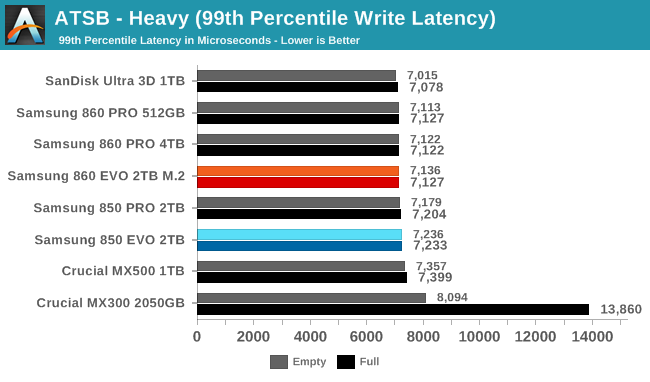
Aside from the Crucial MX300, the 99th percentile write latency scores are all essentially the same for this batch of drives. There's a bit more variation for the 99th percentile read latencies, where the 860 EVO is slightly faster than its predecessor but still not as fast as the current or previous generation MLC drives from Samsung.
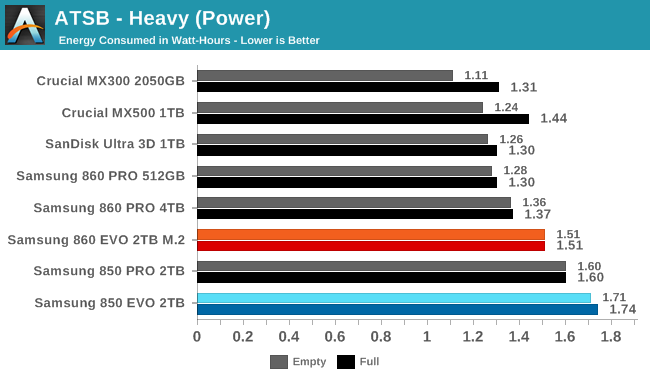
The 860 EVO uses less power during the Heavy test than its predecessor, but the improvement isn't enough to catch up to the Crucial and SanDisk drives, which match or beat the 860 PRO's efficiency.










32 Comments
View All Comments
Reflex - Wednesday, February 14, 2018 - link
https://www.amazon.com/gp/product/B01LB05YOO/Micron 1100 2TB for $379
This is basically a clone of the MX300 marketed to IT departments. Cheaptest 2TB SATA option I've seen by far, and gets good reviews, essentially identical to the MX300 (same hardware, no surprise) but has a better warranty I believe.
CherryBOMB - Wednesday, February 14, 2018 - link
Thanks for the information comment on your experience.bug77 - Wednesday, February 14, 2018 - link
I wonder what kind of warranty you get with those, since Micron branded products are not usually meant for retail.Reflex - Wednesday, February 14, 2018 - link
https://www.nikktech.com/main/articles/pc-hardware...According to this review of the 256GB model of this drive, it is a 5 year warranty.
Reflex - Wednesday, February 14, 2018 - link
The Crucial MX300 that it is a clone of has only a 3 year warranty, for reference.bug77 - Friday, February 16, 2018 - link
Actually, in the provided Amazon link, the first question is about warranty and the seller says it's 3 years. I was just afraid these were sold as stripped parts and wouldn't be covered, but it seems that not the case.Reflex - Friday, February 16, 2018 - link
The seller is not the OEM however, it's a third party. I have no idea if that is correct or the review I linked was correct. Micron's site is not helpful.xrror - Thursday, February 15, 2018 - link
How long has this drive been out???! Because I've been looking for an affordable 2TB option for the past half year and can't believe I never found this one.Thanks for the heads up on this model.
Reflex - Thursday, February 15, 2018 - link
I am unclear on how long it has been out, the review I linked is from late 2016, but the Amazon page implies its only been there since late 2017. My guess is its only sold into enterprise settings and a seller with stock listed it on Amazon. Regardless, its a great price for a brand that isn't questionable.Reflex - Saturday, February 17, 2018 - link
In case anyone is tracking this: I got mine in the mail yesterday. It is definitely intended for OEM markets, it came in a sealed anti-static bag with no other packaging. That said I popped it into a system and it was immediately recognized and is the capacity expected. No problems at all.